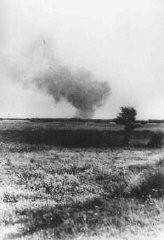You searched for: 成都谷歌优化怎么做【TG飞机:@bapingseo】基里巴斯facebook群发【TG电报:@bapingseo】微盘盘源码定制【Telegram:@bapingseo】ag街机网址pg麻将胡了2?p1FhyE/M3m6Du.html
<< Previous | Displaying results 126-150 of 653 for "成都谷歌优化怎么做【TG飞机:@bapingseo】基里巴斯facebook群发【TG电报:@bapingseo】微盘盘源码定制【Telegram:@bapingseo】ag街机网址pg麻将胡了2?p1FhyE/M3m6Du.html" | Next >>
-
Warsaw Uprising
ArticleThe 1944 Warsaw uprising was the single largest military effort undertaken by resistance forces to oppose German occupation during World War II.

-
How Many People did the Nazis Murder?
ArticleBehind the number of victims of the Holocaust and Nazi persecution are people whose hopes and dreams were destroyed. Learn about the toll of Nazi policies.
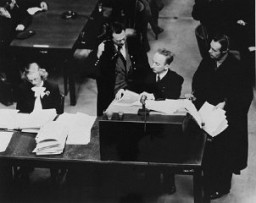
-
1943: Key Dates
ArticleExplore a timeline of key events during 1943 in the history of Nazi Germany, World War II, and the Holocaust.

-
100-meter race at the Olympic Games in Berlin, 1936
Film[This video is silent] Olympic athlete Jesse Owens won four medals at the 1936 Olympic Games in Berlin, Germany: 100-meter dash, gold200-meter dash, goldBroad (long) jump, gold4x100-meter relay, gold This footage shows Owens winning the 100-meter dash in a time of 10.3 seconds. Owens was one of the 18 African Americans (16 men and 2 women) who competed in the 1936 Olympic Games in Berlin. These athletes brought home 14 medals: 8 gold; 4 silver; and 2 bronze.

-
Railcar: Interior
ArtifactMany different kinds of railway cars were used for deportations. They varied in size and weight. The railway car on display in the United States Holocaust Memorial Museum's Permanent Exhibition is of just one type used. The dimensions of the railway car in the Museum's exhibition are as follows: Total length 31 feet 6 inches (9.6 meters); interior space for deportees 26 feet 2 inches (8 meters). Total height 14 feet (4.3 meters) from the bottom of the wheel to the highest point of the car; interior space…
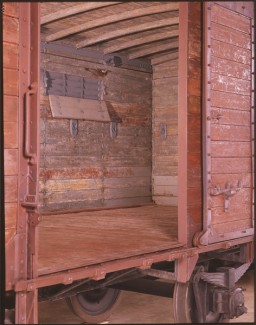
-
Valises by the railcar in the Museum's Permanent Exhibition
ArtifactMany different kinds of railway cars were used for deportations. They varied in size and weight. The railway car on display in the United States Holocaust Memorial Museum's Permanent Exhibition is of just one type used. The dimensions of the railway car in the Museum's exhibition are as follows: Total length 31 feet 6 inches (9.6 meters); interior space for deportees 26 feet 2 inches (8 meters). Total height 14 feet (4.3 meters) from the bottom of the wheel to the highest point of the car; interior space…

-
Chart with the title "Die Nürnberger Gesetze" [Nuremberg Race Laws]
PhotoChart with the title "Die Nürnberger Gesetze" [Nuremberg Race Laws]. In the fall of 1935, German Jews lost their citizenship according to the definitions posed in these new regulations. Only "full" Germans were entitled to the full protection of the law. This chart was used to aid Germans in understanding the laws. White circles represent "Aryan" Germans, black circles represent Jews, and partially shaded circles represent “mixed raced” individuals. The chart has columns explaining the…
![Chart with the title "Die Nürnberger Gesetze" [Nuremberg Race Laws]](https://encyclopedia.ushmm.org/images/thumb/109130bd-4617-43ad-a556-d2955f1a4aa3.jpg)
-
The Enabling Act
ArticleThe Enabling Act of March 1933 allowed the Reich government to issue laws without the consent of Germany’s parliament. It laid the foundation for the Nazification of German society.

-
Law for the Imposition and Implementation of the Death Penalty
ArticleLearn more about the Law for the Imposition and Implementation of the Death Penalty, which the Nazis enacted after the Reichstag Fire Decree in 1933.
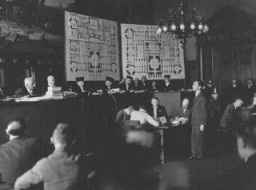
-
Abraham Bergman
ID CardAbraham was born to a Jewish family in Krasnik, a town in the Lublin district of Poland. The town had a large Jewish population. Abraham's father was a tailor. When Abraham was 2, his mother died and he was raised by his grandmother. At the age of 7, Abraham started public school. 1933-39: Abraham liked school but found it difficult. The Christian children often yelled at the Jews, "You killed our God." One year, on the day before Christmas break, some kids brought ropes tied to iron weights to school.…

-
Hinda Chilewicz
ID CardHinda was the eldest of three children in a comfortable middle class Jewish family. Her father owned a textile business in Sosnowiec and her mother attended to the home. Sosnowiec in southwestern Poland had a growing Jewish community of almost 30,000 people. There was a Jewish hospital as well as religious schools. 1933–39: Hinda was just 13 years old when German troops invaded Poland on September 1, 1939. Three days later, they occupied Sosnowiec and terrorized the Jewish community, killing over a…

-
Lucien-Louis Bunel
ID CardLucien was the fourth of eight children born to poor Catholic parents in a small town in northwestern France. Lucien began his seminary studies in nearby Rouen at the age of 12. Following two years of military service, he resumed his religious studies in 1922 and was ordained as a priest three years later. He joined the Carmelite religious order in 1931, and became Father Jacques. 1933-39: In 1934 Father Jacques moved to the town of Avon, where he established a boys' school,…

-
Refugees Today
ArticleAs of mid-2022, there were about 27 million refugees. Learn more about these refugees, the violence they face, and the global impact of the refugee crisis.

-
Leopold Page describes meeting German industrialist Oskar Schindler
Oral HistoryLeopold was a teacher in Krakow, Poland, when World War II began in 1939. While serving in the Polish army, he was captured by Germans. Leopold escaped from a prisoner-of-war transport. Soon after, he met the German industrialist Oskar Schindler. The two became friends. Leopold was forced to live in the Krakow ghetto. He later worked in Schindler's factory in Bruennlitz. He and the other Jews who worked there were treated relatively well and protected from the Nazis. After the war, Leopold moved to the…

-
Stephen S. Wise
ArticleStephen Wise (1874–1949) was a prominent Jewish leader in the United States between 1933-1945. Learn more about his work during the Holocaust.

-
Blechhammer
ArticleThe Germans established the Blechhammer camp as a subcamp of Auschwitz in April 1941. Learn about the camp's history and conditions there.
-
Gleichschaltung: Coordinating the Nazi State
ArticleGleichschaltung is the German term applied to the Nazification of all aspects of German society following the Nazi rise to power in 1933.
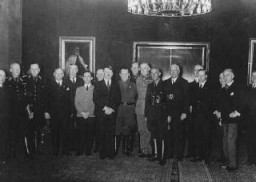
-
Treblinka Uprising
Media EssayUnder the most adverse conditions, Jewish prisoners initiated uprisings in some camps and killing centers. On August 2, 1943, about 1,000 Jewish inmates revolted in Treblinka.
-
A survivor in Wöbbelin
PhotoA survivor in Wöbbelin. The soldier in the foreground of the photograph wears the insignia of the 8th Infantry Division. Along with the 82nd Airborne Division, on May 2, 1945, the 8th Infantry Division encountered the Wöbbelin camp. Germany, May 4-5, 1945.
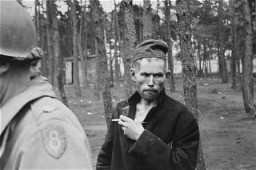
-
View of the Wöbbelin concentration camp
PhotoOn May 2, 1945, the 8th Infantry Division and the 82nd Airborne Division encountered the Wöbbelin concentration camp. Here, American soldiers patrol the perimeter of the camp. Germany, May 4-May 10, 1945.

-
US troops at the Wöbbelin camp
PhotoOn May 2, 1945, the 8th Infantry Division and the 82nd Airborne Division encountered the Wöbbelin concentration camp. This photograph shows US troops in the Wöbbelin camp. Germany, May 4–6, 1945.
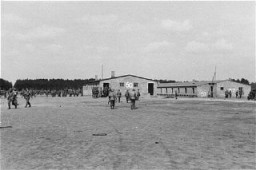
-
Jewish women at forced labor
PhotoJewish women deported from Bremen, Germany, are forced to dig a trench at the train station. Minsk, Soviet Union, 1941. (Source record ID: E9 NW 33/IV/2)

-
Carl Goerdeler
PhotoCarl Goerdeler, former mayor of Leipzig and a leader of the July 1944 conspiracy to kill Hitler, stands trial before the People's Court in Berlin. He was condemned and executed at Ploetzensee prison on February 2, 1945. Berlin, Germany, 1944.
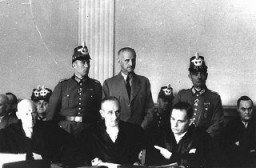
-
Simone Schloss
PhotoSimone Schloss, a Jewish member of the French resistance, under guard after a German military tribunal in Paris sentenced her to death. She was executed on July 2, 1942. Paris, France, April 14, 1942.
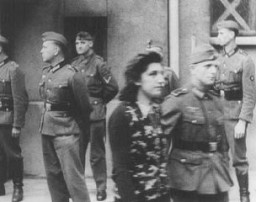
-
Smoke from the Treblinka killing center
PhotoDistant view of smoke from the Treblinka killing center, set on fire by prisoners during a revolt. This scene was photographed by a railway worker. Treblinka, Poland, August 2, 1943.
